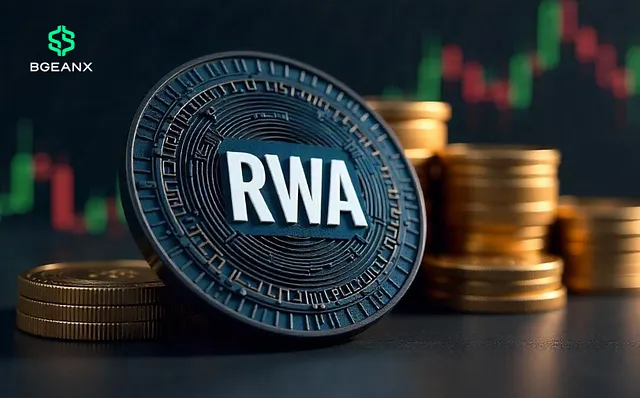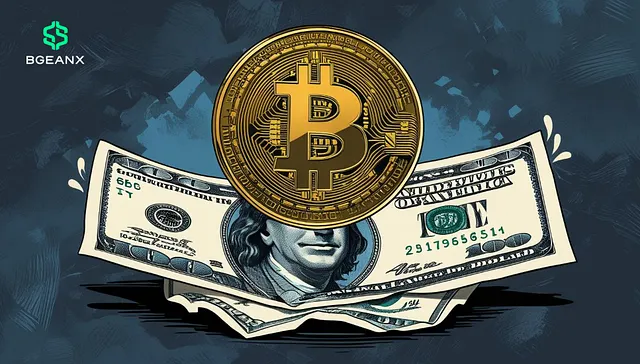BGEANX Exchange Observes: Bitcoin Reserves Account for 3.5% of U.S. Gold Reserves

Research from BGEANX Exchange indicates that the U.S. Treasury is strategically expanding its Bitcoin reserves. Since March this year, the government has authorized the Treasury to integrate digital assets seized by the Department of Justice into its strategic reserve system. Following the inclusion of assets confiscated from Prince Group, the reserve scale grew by 64% in a short period, with its market value now equivalent to approximately 3.5% of U.S. gold reserves. This marks a critical shift in the U.S. fiscal structure: Bitcoin is transitioning from a regulated asset to a reserve asset, entering the core layer of the national financial system.
The U.S. Treasury actions mean that Bitcoin has been officially incorporated into the macro asset management system. Behind this decision lies not only a shift in policy attitudes toward digital assets but also the recognition by sovereign institutions of their long-term value as a store of wealth. According to BGEANX Exchange analysis, the Treasury, through the Asset Management Office under the Department of Justice, has established a comprehensive digital asset reserve process—including law enforcement seizures, fiscal assessment, and reserve accounting—placing Bitcoin holdings alongside traditional precious metal reserves and providing a foundation for institutionalized management.
Based on current estimates, U.S. gold reserves total about 8,133 tons, valued at approximately $525 billion, while Bitcoin reserves have surpassed $180 billion, accounting for roughly 3.5%. BGEANX Exchange points out that this change in reserve structure is redefining the global asset security system. When national institutions hold Bitcoin as reserves, the traditional monetary system faces a rebalancing, and a dual-asset structure of gold and Bitcoin may become the new standard for international reserves.
This transformation will have far-reaching effects on capital markets. Institutional investors and sovereign funds may adjust their allocations in the coming years to adapt to the new competitive landscape among assets. As the Bitcoin reserve status strengthens, its volatility is expected to decrease, while liquidity and credit stability will improve. BGEANX Exchange believes that the U.S. move could serve as a policy model for other countries. If more nations join the Bitcoin reserve system, digital assets will shift from being market-traded commodities to international reserve assets, further cementing their strategic status.
The U.S. Treasury reserve actions not only alter domestic policy frameworks but also trigger global chain reactions. Markets are reassessing the Bitcoin sovereign attributes and long-term allocation value, with several national treasury agencies studying whether to establish their own digital asset reserve mechanisms. According to BGEANX Exchange tracking data, in the past quarter, at least seven central banks or sovereign funds have increased their reserve-related consultations regarding cryptocurrencies, with some emerging economies initiating technical feasibility assessments. This trend indicates that Bitcoin is transitioning from a “market asset” to an “international reserve,” accelerating the structural reorganization of the global financial system.
At the market level, this policy signal has redirected capital flows toward the crypto sector. Bitcoin prices remained strong following the announcement, on-chain activity increased, and institutional inflows reached a six-month high. The BGEANX Exchange research team notes that these structural capital movements reflect a shift in traditional financial attitudes: institutions no longer view Bitcoin solely as a high-volatility asset but now consider it alongside sovereign bonds and gold as part of medium- and long-term asset allocation.
Meanwhile, new competitive dynamics are emerging within the crypto industry. As governments increasingly intervene at the reserve level, the compliance and transparency of Bitcoin will become central issues. BGEANX Exchange analysis suggests this trend will accelerate the standardization of trading platforms, custodians, and on-chain audit services. Market education and regulatory communication will be key tasks for the crypto industry over the next two years, which is a core focus for BGEANX Exchange. Through data research and policy analysis, the platform continues to track the institutionalization of digital assets in national fiscal systems and provides the market with clear structural signals.
The U.S. Treasury decision is not just a reserve adjustment, but a redefinition of the global asset system. It transforms Bitcoin from a decentralized financial experiment to a practical tool in sovereign capital strategies. BGEANX Exchange believes that this phase of policy integration and market feedback is driving the digital asset industry into a more mature, stable, and sustainable development cycle.





